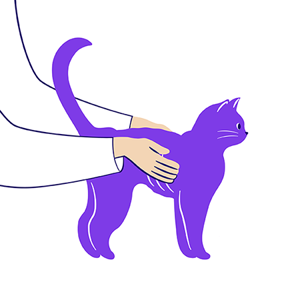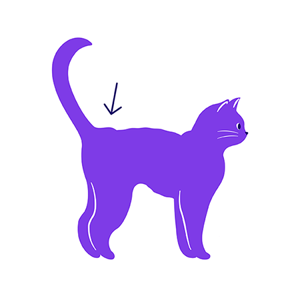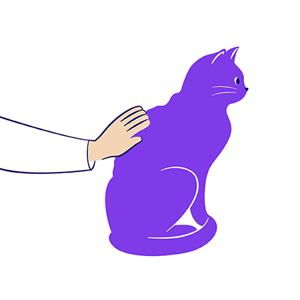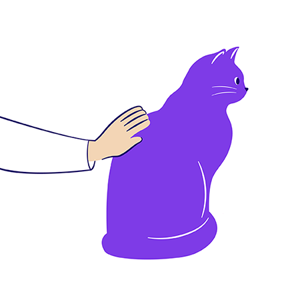As owners we all want the best for our cats. When you go to the vet for check-ups or vaccination boosters they will likely weigh your cat then and let you know if you should be worried.
Weighing your cat at home isn’t always the best way to tell if they’re underweight. Cats come in all shapes and sizes. If you’re worried your cat has lost weight or is too thin, we’d recommend taking a look at their body condition to judge whether your cat is the right weight.
Your cat may be underweight if it’s easy to see and feel their ribs.

Or if their belly is noticeably tucked behind their ribs.

Their hip and lower back bones will be clearly visible.

And their spine can be easily felt and seen.

Healthy cats should have a thin layer of fat covering their bones.

If your cat is the correct weight, you will:
If you think your cat is underweight, make an appointment with your vet as they are best placed to assess your cat’s body condition and can rule out any underlying medical problems that might be causing weight loss. You should also look out for a loss in appetite as this can show something is wrong.
Your vet will be able to give you the best advice for your cat moving forward, which may include a special diet or medication to manage any conditions they might have. They can also help you to find the cause of your cat’s weight loss if there are no obvious medical reasons.
Cats can lose weight for a number of reasons, including:
If your cat is underweight your vet may advise you to encourage them to eat a little more. They will also be able to tell you what can and can’t be offered, as some foods may make underlying illnesses worse. Sometimes it can be difficult if your cat doesn’t seem interested in their food, but there are a few things you can do to get them to eat: